Rye fisherman Keper Connell hooks consumer wave with his Gulf of Maine tinned tuna
RYE — Each tin of Gulf of Maine Conservas tuna begins with fisherman Keper Connell boarding Figment, his 45-foot Novi, long before sunrise to make the two-hour, 25 mile journey from Rye Harbor in New Hampshire to Jeffreys Ledge.
At the fishing grounds, Connell anchors where the ledge drops from 200 feet to 500 feet and sets out two or three lines baited with mackerel, herring, squid or a groundfish, if that’s what the giant bluefin tuna are feeding on.
Around him and the other fishing boats are whales, dolphins, sunfish, basking sharks and leatherback sea turtles. As the sun comes up, the air is filled with sea birds: shearwaters, cormorants, storm petrels, gulls, terns, jaegers; so many species he brings his Audubon guide on the boat to identify the birds as he waits for a fish to strike.
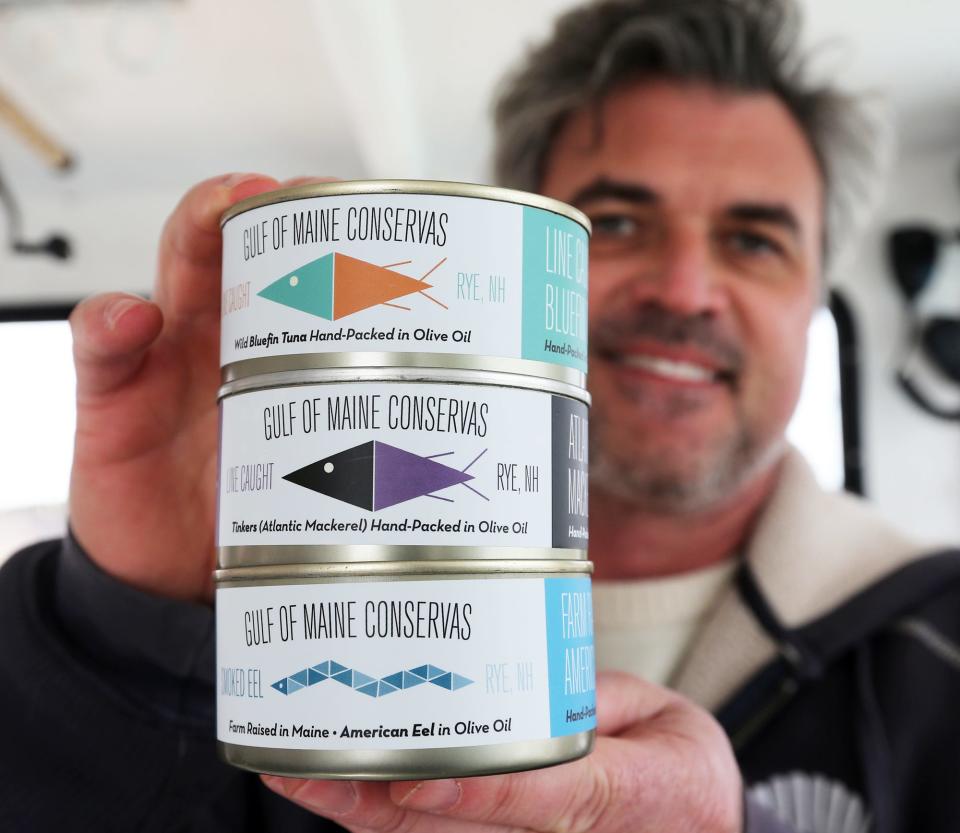
Connell doesn’t catch tuna on every trip to the ledge, but when a giant bluefin does strike his line, he still gets a rush of adrenaline.
“The rod bends over and the drag screams. You go from peaceful to cacophony in seconds,” he said. “It’s redefining. You're branded from that point on. There’s nothing that’s quite the same.”
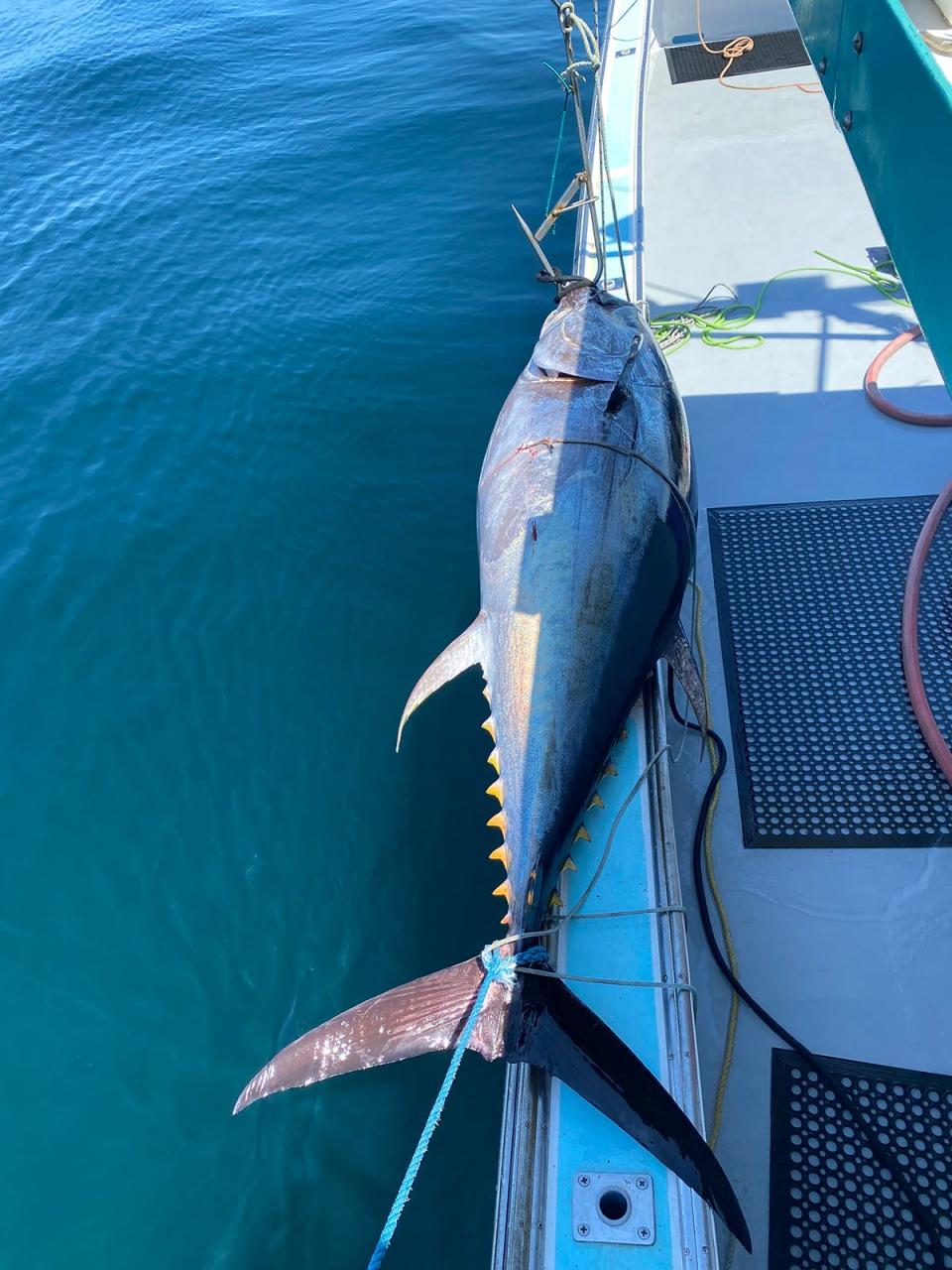
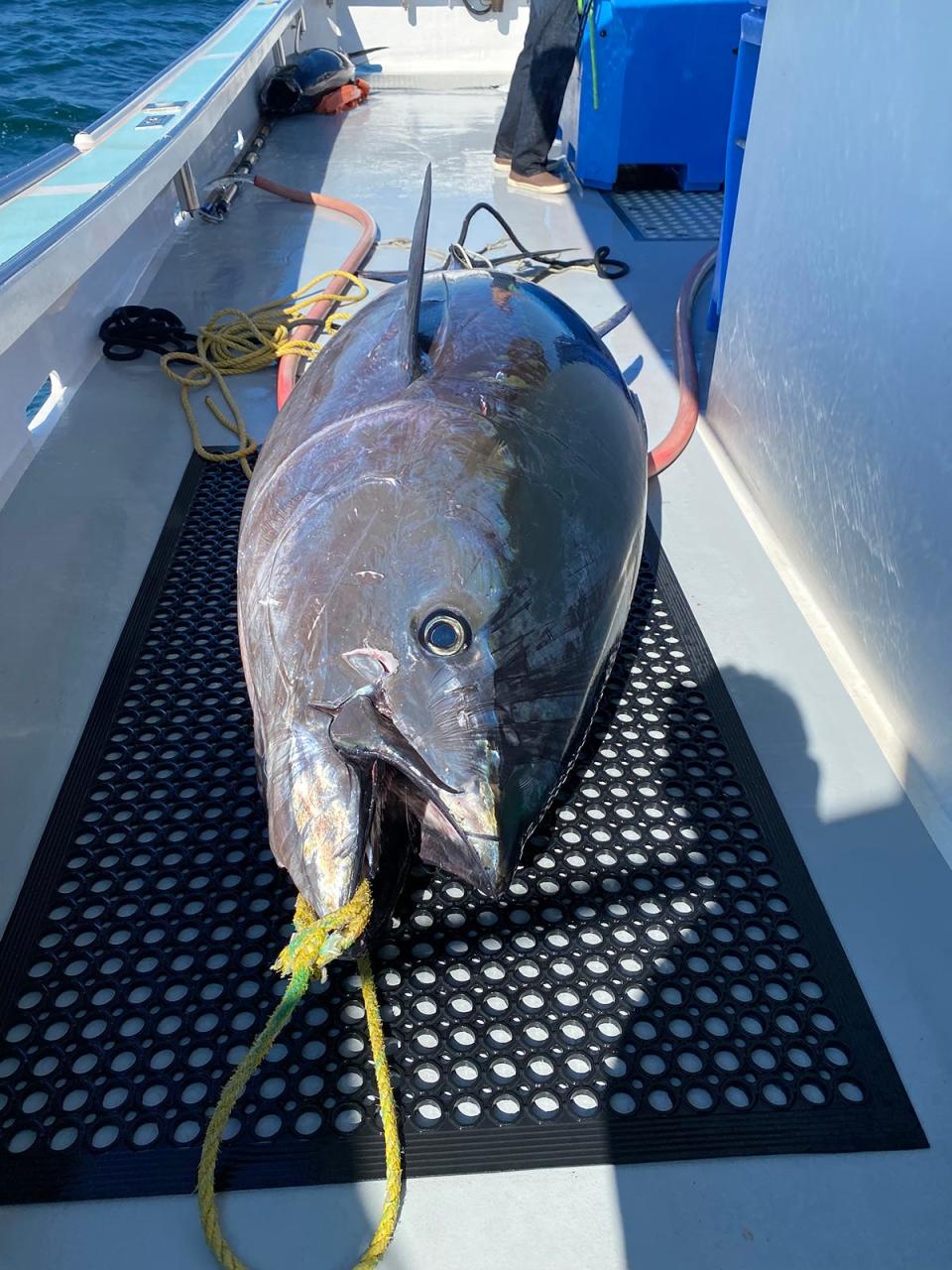
He lands some tuna in under an hour while others take much longer.
“I fought one last year for five hours,” he said. “That was about a 600-pounder, and he was just mean. He didn’t cooperate.”
When the tuna is close enough to look in the eye, Connell harpoons it, tailropes it, brings it on board and dispatches it using the Japanese Ike-Jime method, which is fast, considered the most humane method and preserves the quality of the fish.
“It is caring for the fish properly, so it’s not bruised and battered and it immediately dies,” he said.
Back onshore, Connell removes the head and tail and trucks the 300-350 pound core on ice to Boston, where it is recorded by the National Oceanic and Atmospheric Administration.
For many years, Connell would have then sold the fish to a wholesaler, who would in turn find a buyer, usually for the sushi market in Japan, but as wholesale tuna prices dropped in recent years, he began to think that there had to be a better way.
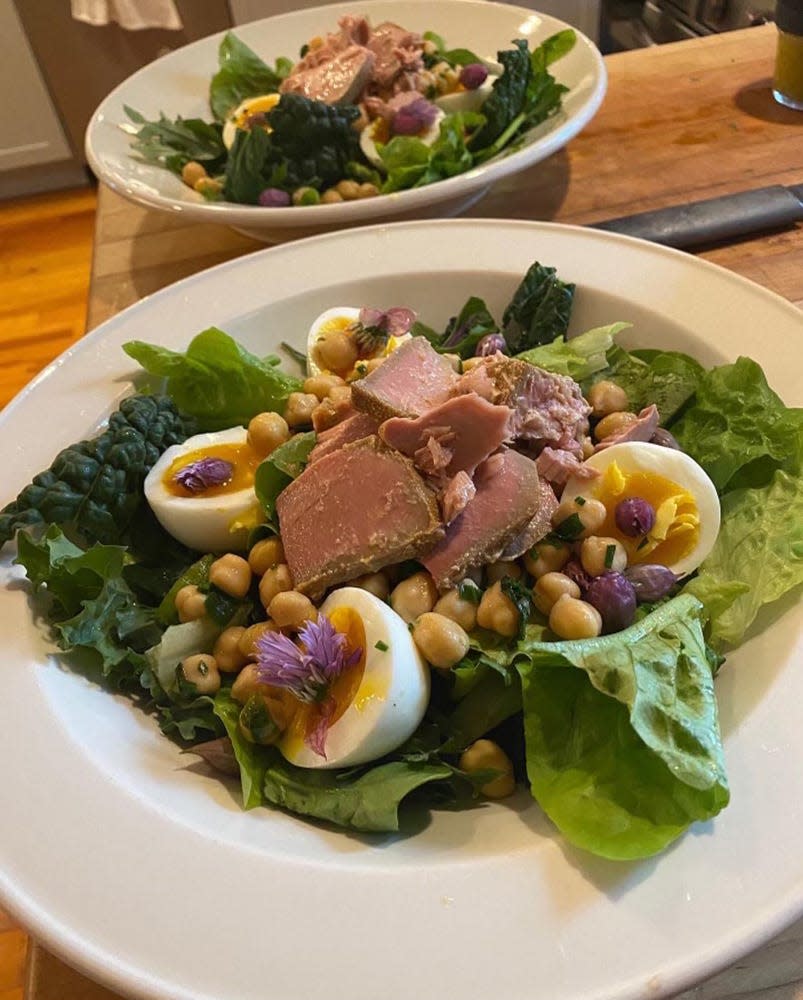
In 2016, on a trip to Barcelona, he admired how Spaniards used tinned fish in their tapas and pinchos.
“They do it in very small portions of high-quality grade fish,” Connell said. He noted the use of pickled vegetables and crunchy breads and an idea began to form.
In 2019, he began experimenting with canning some of his catch, getting the right blend of fresh fish, Calivirgin olive oil and salt. He contracted with a cannery in Oregon and launched his business, Gulf of Maine Conservas.
“I played around with the recipe and figured out what the price was going to be for the retail side, and a year later I had 5,000 tins and considerable clientele in the Northeast region,” he said.
“I’m catching the fish, I’m portioning it, I’m cooking it and then I’m containing it,” he said. “All you as the consumer have to do is open it and enjoy it.”
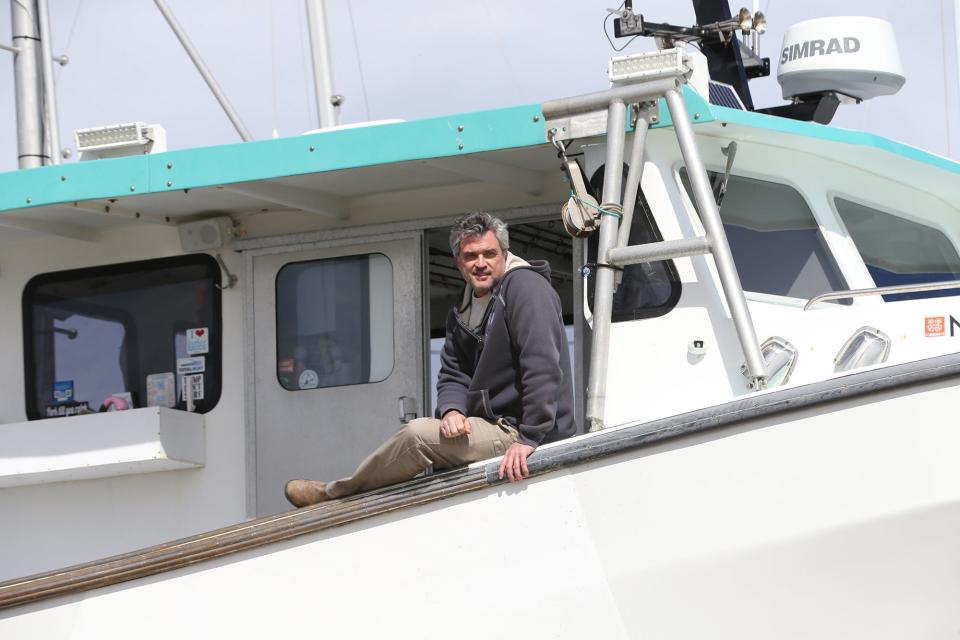
Just a few years later, Connell said, the venture is profitable and his market spans the globe. In addition to bluefin tuna, he now tins mackerel, which he catches off the Isles of Shoals, and unagi, smoked American eel, which he buys from an aquaculture outfit in Waldoboro, Maine.
“I’m selling in practically every state,” Connell said. “I have to send some to Sacramento today. I have to send some to Finland, too. Which is cool. But my largest marketplace in this region is Portland, Maine. Portland is a food town, and I have tremendous support there."
In Portsmouth, he said he sells to restaurants, including Franklin Oyster House, Cava and Botanica as well as to specialty wine and cheese shops that feature cured meats, pickled vegetables and other “small-portion, high-quality, shelf-stable foods.”
“They can pair this with the products they already have,” Connell said.
Online sales are booming, too.
Tinned fish become a global sensation
Connell admits catching tuna involves some luck and his timing for the launching of a tinned fish business could not have been luckier. During the coronavirus pandemic, tinned fish became a hot commodity, especially among young people as social media influencers began touting them and sharing recipes and “date night” experiences.
The Wall Street Journal, in January 2023 published a story headlined: “The Latest TikTok Star Is Canned Tuna,” reporting: “U.S. sales of canned seafood rose 9.7% to $2.7 billion in 2022, according to data provider Euromonitor International, with industry executives crediting the increase to a surge in demand from younger shoppers seeking novel but still affordable foods.”
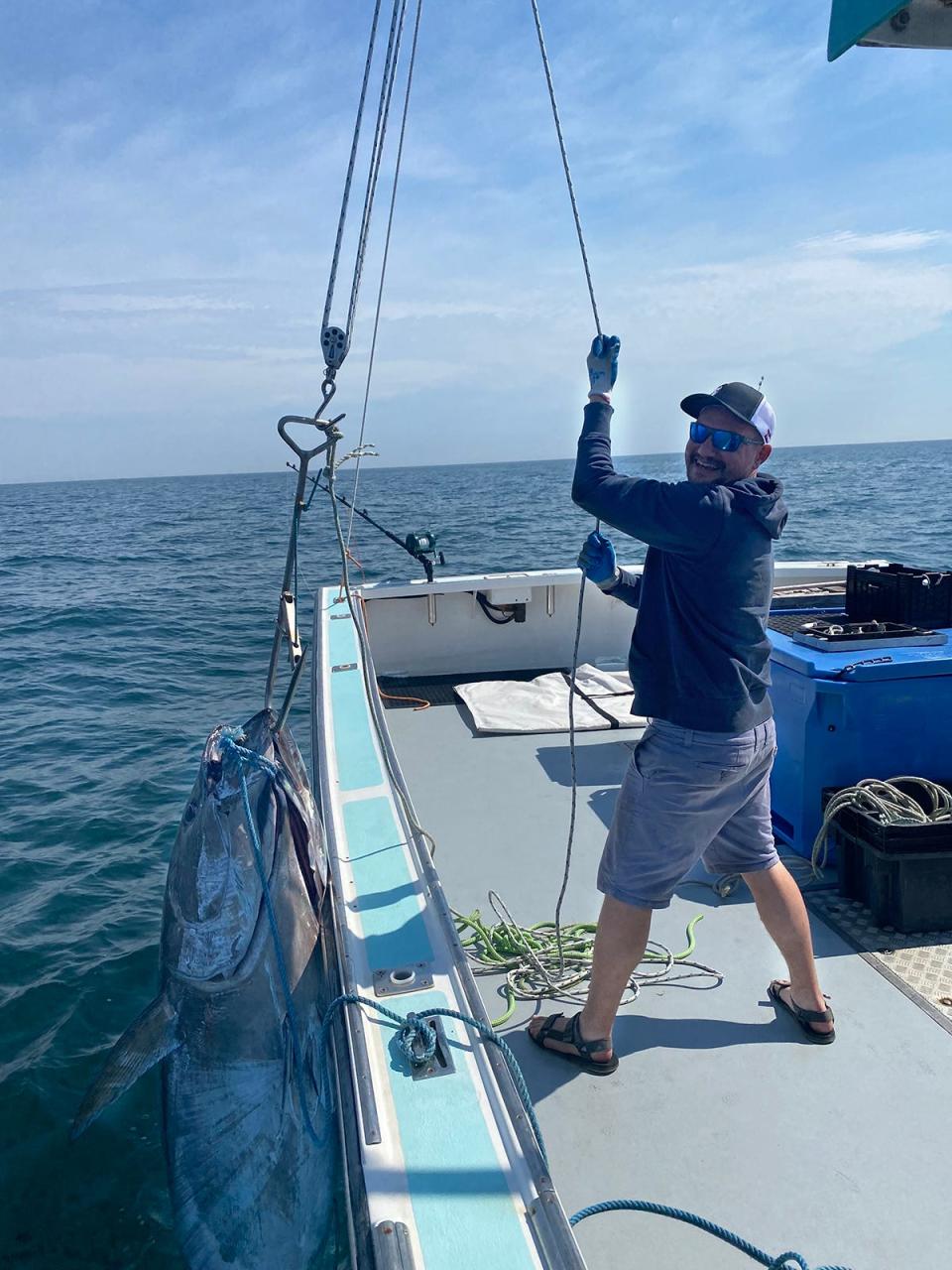
The Daily Mail reported in February: “The #tinnedfish TikTok page has more than 30 million dedicated viewers, where creators reveal how to make an assortment of dishes using sardines, tuna and mackerel.”
On March 23, Persistence Market Research published a paper projecting that by 2033, the global tinned fish market is expected to reach $17.2 billion in revenue.
“Tinned fish is regarded as a health food option because it contains omega-3 fatty acids, which are beneficial to a healthy heart and brain, as well as preventing blood clots,” the paper asserted.
What's the difference between Conservas tuna and grocery store tuna?
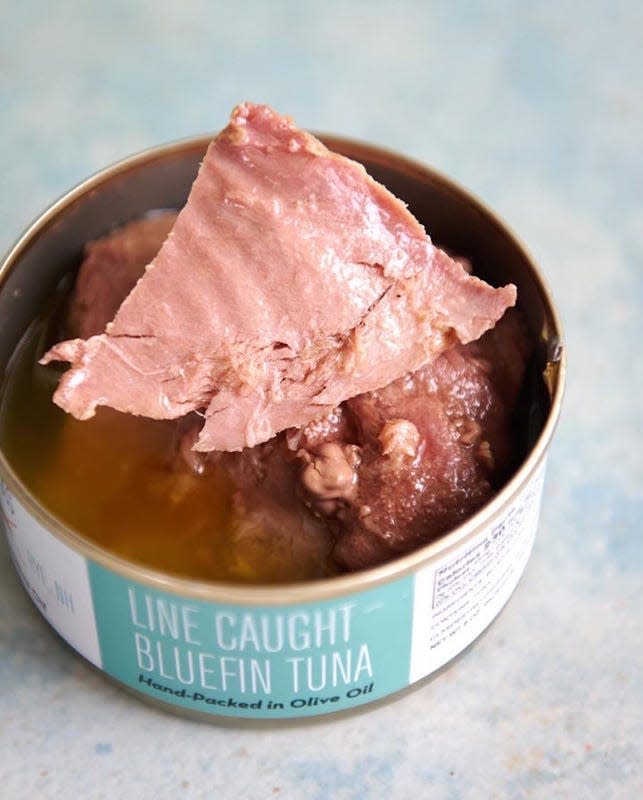
When you open a can of Gulf of Maine Conservas bluefin it is 6.5 ounces of earthy red, rich and flavorful whole tuna meat. It looks nothing like flaked, white albacore and skipjack tuna found on grocery store shelves that traditionally require mayonnaise and celery to provide flavor.
“I want you to enjoy it and cherish this exactly the way it is without doing anything to it,” Connell said. “It’s seasoned, it’s savory and it should be a pleasurable experience as it is. This is the Mediterranean style and the way many people choose to eat seafood, very high quality, small portions, frequently.”
The bluefin tuna is a majestic creature, running 500 pounds or more and it is the only warm-blooded tuna.
“It is a dynamic animal and that is reflected in the meat,” Connell said. “The meat has fat and texture and color and all this beautiful flavor. What is the difference between that and a skipjack tuna, which is the most consumed tuna? First off, skipjack is maybe 10 pounds and that tuna, the skipjack, has no inherent flavor. You have to add things to it.”
Because Connell catches each of the tuna he sells, he can tell you the story behind each can.
Joe Martitila, owner and operator of SeeBee Honey in Rye developed a QR code to tell the story of his bees and his honey and he is helping Connell develop a similar QR code to tell the story and trace the origin of his fish.
Connell said he has applied for a USDA Value Added Grant with the goal to increase the marketing, production and distribution of his products. His long-term vision includes a cannery in New Hampshire.
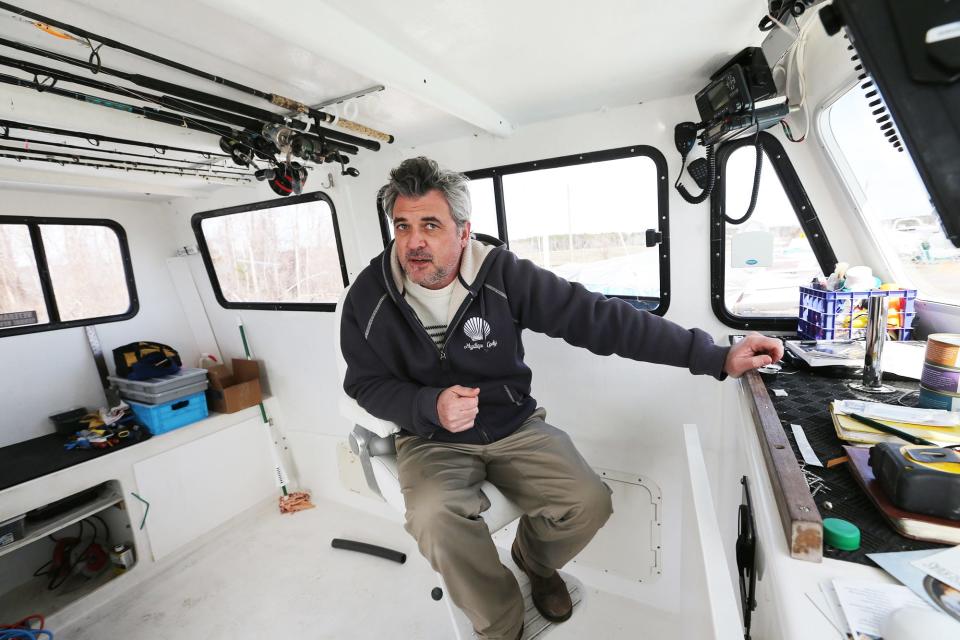
“Not only am I catching the fish, I’m purveying it through every step,” Connell said. “Other than owning a cannery here in New Hampshire, I’m ensuring that what I’m putting in there is authentic and I’m standing behind it.”
That authenticity costs more. While mass produced skipjack and albacore tuna runs anywhere from $1 to $3 for a 3-ounce can, Conservas tuna costs $25 for a 6.5 oz. can on the Conservas website. Connell said "there's really no comparison" between his line caught, American, Gulf of Maine giant bluefin tuna and the mass produced skipjack tuna from overseas.
An online search shows Conservas' pricing is in line with other wild caught sustainable, traceable, top-tier canned tuna.
"If you enjoy seafood, you quickly realize what I am doing," he said.
This article originally appeared on Portsmouth Herald: Rye fisherman hooks into surging global demand for quality tinned fish

